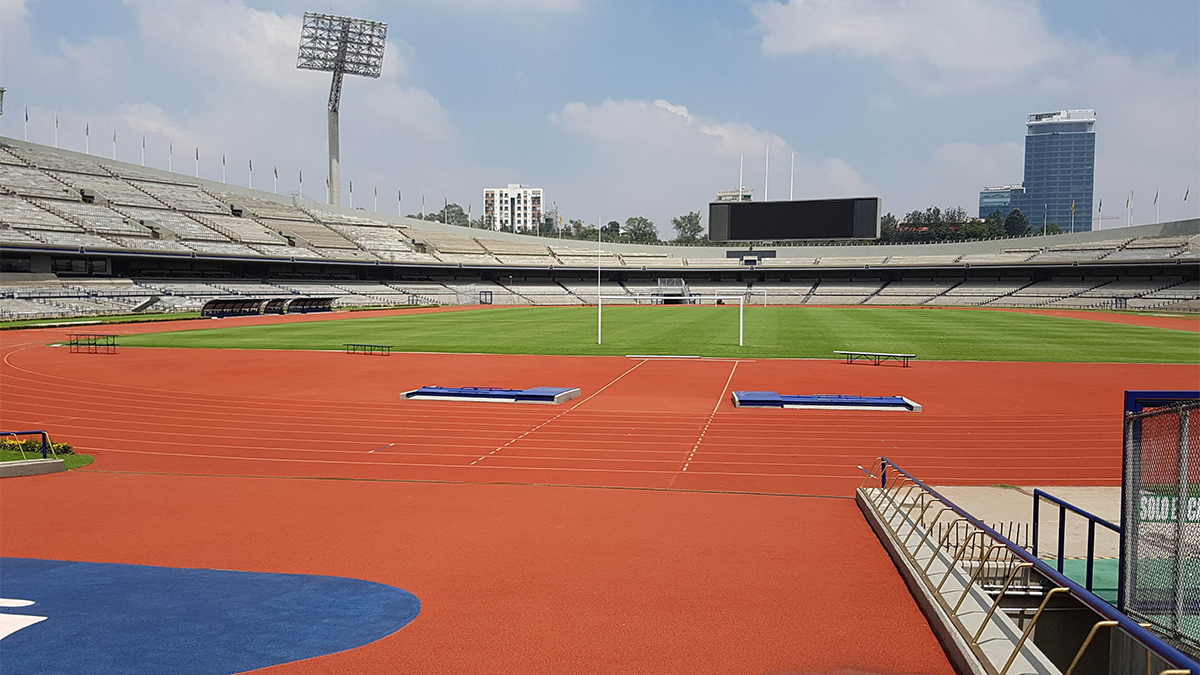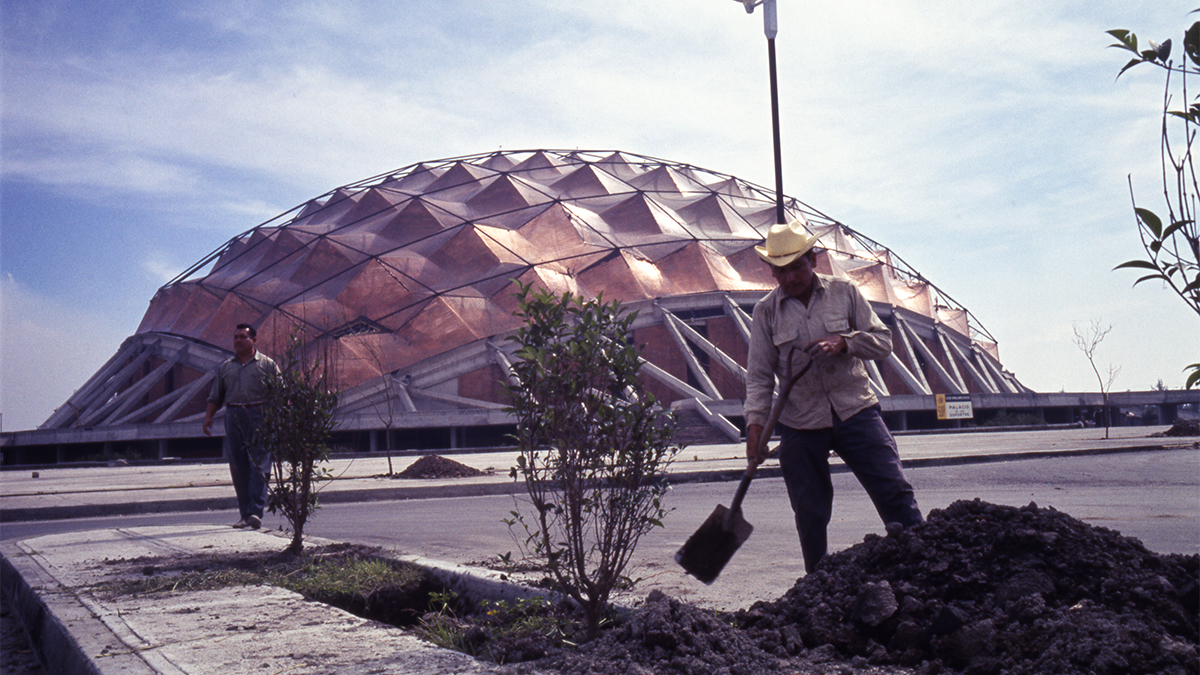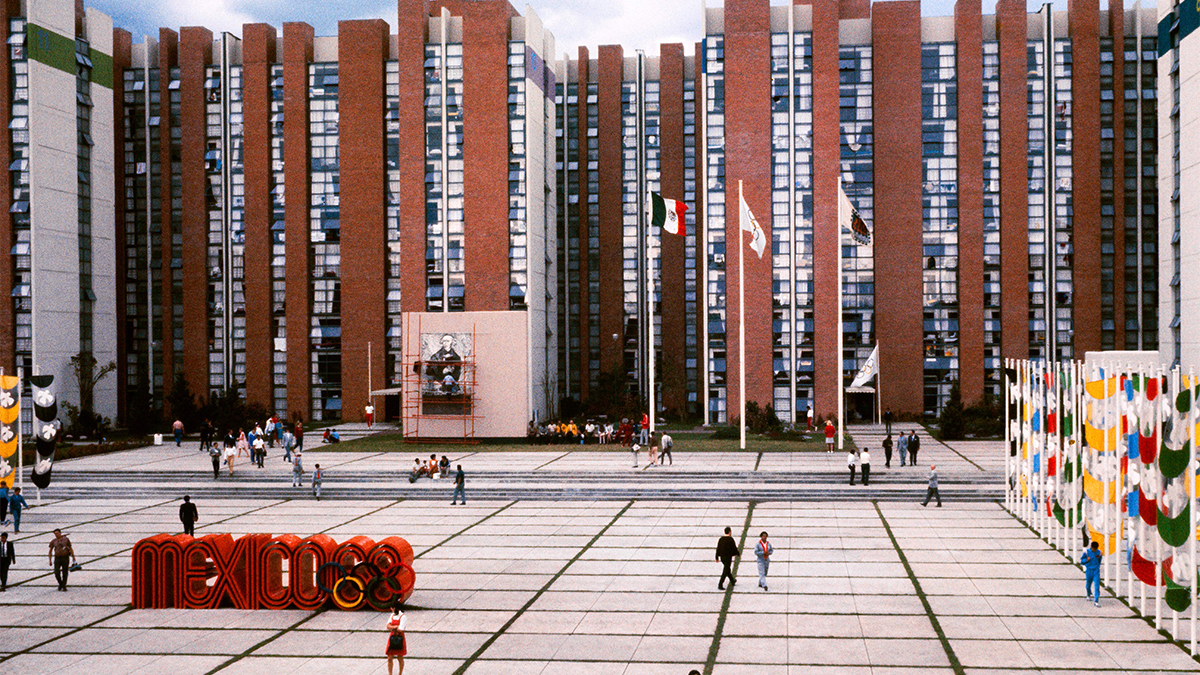Mexico City Olympic venues continue to show usefulness
As we commemorate the 50th anniversary of the seminal moment of the Mexico City Games, when Americans John Carlos and Tommie Smith raised a black-gloved fist from the medals podium, GlobalSport Matters looks back at the year from a global sporting perspective. From the World Series helping a wounded Detroit heal to athletic innovations that trace their origins to those Olympics, 1968 served as a critical pivot point in the role sports plays in society and introduced the modern era of athlete activism.
While Mexico was going through a period of economic growth in the 1960s, Mexico City was preparing for the 1968 Olympic Summer Games.
Like every host city, Mexico City had agreed to a series of building projects to house specific events.
Built in 1952 with an original capacity of 68,000, the Olympic stadium of the National Autonomous University of Mexico (UNAM) was an important venue for the games and had to be upgraded to meet the standards of the International Olympic Committee.
“New buildings like the Olympic pool, the basketball stadium, the sports palace, the stadium for cycling events and the fencing stadium were built in order to fulfill the demands of the Olympic Committee,” Dr. Fernando Greene Castillo wrote in the case study The Spatial Effects of the Construction of the Facilities For the Olympic Games in Mexico City in 1968.
Before planning the games, Mexican officials visited cities that had served as hosts such as London, Helsinki and Tokyo. The officials decided it would be “better to build the Olympic facilities all over Mexico City, because, in this way, the impacts of these premises would affect a much broader area of the metropolis,” Castillo wrote.
On top of that, streets and avenues had to be built or rebuilt to allow in order to give access to the connected facilities.
A total of six new roads had to be built in order to facilitate the needs of all the different sites.
“The Olympic Village and the Rowing facilities were located in the bounds of the city,” Castillo wrote. “Five avenues had to be renewed in order to complete the road infrastructure system of the south of Mexico City.”
Castillo wrote the cost of the roads for the Olympic Games, assumed by the government of the city, was 207 million Mexican pesos or the equivalent of $16.56 million in 1968 American dollars. The total investment estimated for roads, considering different sources, was 987.4 million pesos or $78.99 million American dollars.
It can cost a great deal of money to host the Olympics, beginning with the bidding process. Cities must create an organizing committee and submit a bid to the IOC.
Mark Byrnes wrote in a 2013 article for the website City Lab: “The city’s (Mexico City) population has tripled since 1968, to over 21 million, and its form has radically changed, but almost every single venue that was built for the games is still being used for its purpose.”

“They’ve maintained the stadiums, the swimming facilities, the Olympic Village, and all these structures are being used daily by the general public.”
Manuel Rueda, writing for Splinter (a news and opinion website launched by Univision), asserted the reason for the facilities continued use over the years is they were built in a major city instead of in a far-off, sub-tropical resort.
“Mexico City’s Olympic pool attracts up to 15,000 users per month, according to officials,” Rueda said. “The local government employs 100 instructors, who give affordable swimming lessons to anyone who registers at the pool.”
Additionally, Rueda reported there is a long waiting list to acquire pool membership and some may wait four months to join.
“Mexico City’s Olympic stadium is the home of Pumas, one of Liga MX’s (Mexican League) most popular soccer teams,” Rueda wrote. “The best thing about this stadium in terms of cost effectiveness is that it wasn’t even build exclusively for the Olympics.”
The 68,000-seat stadium also plays host to a variety of sports events and serves Mexico’s largest university, UNAM.
Rueda said the government recovered its investment in the Olympic Village, which was built with public funds, by selling the apartments to individual families, who now maintain the site on their own.
The 18,000-seat Sports Palace, which was used to host Olympic basketball games, is used for concerts and conventions. The Mexico Arena, which was built in the 1950s and holds 18,000 people, was used for boxing matches.

“Now, the arena is Mexico City’s top lucha libre or mixed martial arts venue,” Rueda wrote.
So, is hosting the Olympics a good investment?
In a paper titled Going for the Gold: The Economics of the Olympics by economists Robert Baade and Victor Matheson that appeared in the Journal of Economic Perspectives in 2016, the authors specifically looked at the costs of playing host to the Olympics from 1968 to 2012 and found that every Olympic Games cost more than originally estimated. The median games cost 150 percent over the original budget.
One of the worst offenders was the 1976 Montreal Olympics, which ended up costing $1.5 billion. Baade and Matheson reported costs “exceeded initial estimates by more than 10-fold.”
One could argue that Montreal was doomed from the beginning. Cleveland State University researchers Ashish Patel, Paul A. Bosela and Norbert Delatte wrote “(the games were) a case of project management failure.”
“The potential embarrassment of missing the opening of the games provided a fixed construction deadline. The planning started about 2 years late, and scheduling fell apart because it was physically impossible to accommodate all the construction activities on the project site,” according to the Cleveland State researchers.
Because the city of Montreal was slow in preparing bid documents it resulted in “double crews, double shifts and overtime were used to attempt to increase productivity, but because of congestion, the increase in productivity was slight,” according to the Cleveland State researchers.
Edith Noriega is a junior journalism student at Arizona State University


